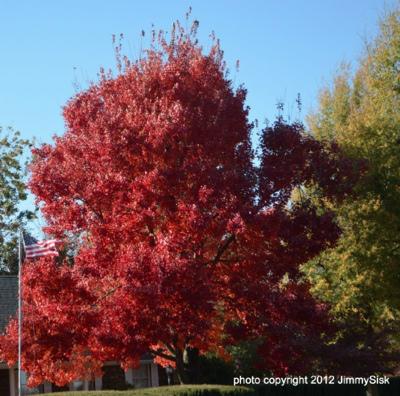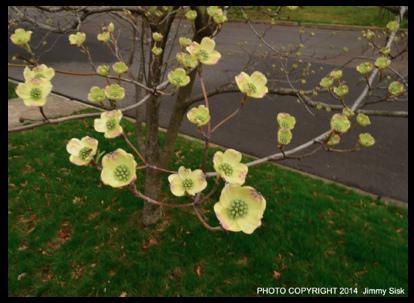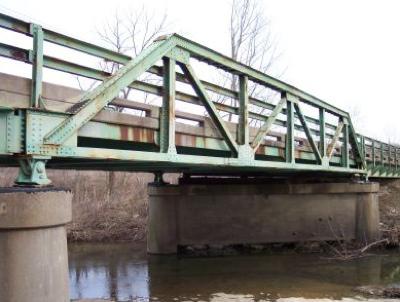
Dee Loflin, SMT Manager/Editor
National Arbor Day is recognized on the last Friday of April, which is April 25 for 2014. Each state determines its Arbor Day based on its unique climate and weather patterns. Missouri has been observing Arbor Day since 1886 when the General Assembly declared that the first Friday in April should be set aside for the appreciation and planting of trees.
This year’s Arbor Day in Missouri has been recognized through a proclamation by Governor Jeremiah “Jay” Nixon as April 4. According to the proclamation: forests cover approximately one-third of the state; provide outdoor recreation, wildlife habitat, natural beauty, and watersheds for stream and rivers; provide employment for 33,000 people who convert trees into essential products; contribute beauty and shade to urban, suburban, and rural areas while creating a more pleasant and healthful environment; and Missouri will continue to benefit from its forests for succeeding generations through tree planting and conservation.
In celebration of Arbor Days and in cooperation with the Missouri Department of Transportation’s (MoDOT) “Trees for Tomorrow” program, MDC distributes nearly 100,000 native tree seedlings from its George O. White State Nursery to fourth-grade classes from more than 1,300 schools throughout the state each spring.
MoDOT supports the production and distribution of the trees to offset the natural resources it may disturb during construction activities. The seedling distribution supports MDC’s Discover Nature Schools program, which provides grade-appropriate curriculum and outdoor, hand-on activities to help students learn about the importance of conservation.
Get more information from MDC on backyard tree care, including proper tree selection and planting tips, online at mdc.mo.gov/node/3321.
TREES WORK
During Arbor Days and every day, MDC’s “Trees Work” public-awareness campaign reminds people how trees work for our wallets, health, families, communities, environment, and economy.
Trees Work for Our Wallets
Shade from two large trees on the west side of a house and one on the east side can save up to 30 percent of a typical residence's annual air conditioning costs.
Trees placed as windbreaks around buildings can save up to 25 percent on heating costs.
Street trees in neighborhoods increase sale prices of houses by an average of $8,870.
Trees Work for Our Health
Views of nature assist at the workplace. Employees with views of nature report 15 percent fewer illnesses and feel more enthusiastic and less frustrated than those without.
Those who commute along tree-lined roads remain calmer and drive less aggressively than those who drive along less treed roads.
Tree-lined streets are more walkable, encouraging more active lifestyles, which decreases obesity and improves heart health.
100-foot plantings of tall trees can reduce noise by 50 percent.
Trees Work for Our Families
Symptoms of Attention Deficit Disorder in children are relieved after spending time in treed areas. Kids can better concentrate, complete tasks, and follow directions after playing in natural settings. Contact with nature helps children develop imagination, creativity, and social relationships.
Trees along streets promote physical activity in children and increase longevity of the elderly.
One of the most effective means of protecting children from sun damage is to plant shade trees where they play.
Trees Work for Our Communities
A 10-percent increase in trees in a neighborhood reduces crime by 12 percent.
Trees improve downtowns. People are willing to spend 12 percent more for goods and services in downtowns with trees, and spend more time shopping and come back more frequently.
People tend to be more familiar and socialize more with neighbors in neighborhoods with trees.
Trees Work for Our Environment
Covering more than one-third of the state, Missouri trees and forests protect soil from erosion and filter water, provide oxygen needed to breathe, and clean the air by trapping and storing pollution.
Missouri forests and trees provide habitat for an incredible diversity of plants and animals that could not exist without them, along with a wealth of outdoor recreational opportunities and breathtaking scenic beauty.100 mature trees intercept about 100,000 gallons of rainfall per year, reducing runoff and providing cleaner water.
The net cooling effect of a young, healthy tree is equivalent to 10 room-size air conditioners operating 20 hours a day.
Missouri’s forests store more than 5 million tons of carbon. Each year, an acre of forest captures between one and four tons of additional carbon.
For each pound of new wood that grows, the tree removes about 1.8 pounds of carbon dioxide from the air and produces 1.3 pounds of oxygen.
Trees Work for Our Economy
Missouri trees and forests provide lumber and other wood products used around the state and around the world.
Missouri’s forest products industry contributes approximately $7.3 billion to the state economy annually, supports 41,200 jobs, and generates $610 million in taxes.
Trees along streets in Missouri communities provide $148 million annually in benefits, including energy savings, increases in property values, and storm-water retention.
For more information on how Trees Work, go online to mdc.mo.gov/node/19333.
WITHOUT TREES…
MDC’s Trees Work public-education campaign is holding a contest encouraging people to finish the phrase “Without Trees...” The winning slogan will be listed on the next poster in the Trees Work series. Simply email “Without Trees...” slogans to treeswork@mdc.mo.gov by April 30. The winner will also receive a complete set of the “Without Trees...” handcrafted letterpress posters plus 10 extra posters with their slogan to give to family and friends. For more information and to see current posters, visit mdc.mo.gov/node/19333.

Dee Loflin, SMT Manager/Editor
Nick Kuhn, forestry field programs supervisor for the Missouri Department of Conservation, says extremely cold weather can actually cause flowering trees to blossom earlier than they might under more normal conditions.
“Nothing about this year’s weather has been normal so far,” says Kuhn, “but if things take a turn toward more average spring weather, we could start seeing redbud blossoms very soon, and dogwoods not far behind.”
Serviceberry and redbuds typically start blooming in late March. Dogwood flowers typically open in mid-April, though the actual date in any given year can vary by as much as three weeks. Kuhn says he would not be surprised to see dogwoods blooming in early April this year … if the weather remains average or warmer.
“The timing of tree flowering and green-up is affected to some degree by day length,” says Kuhn, “similar to the behavior of many animals. But weather plays a pivotal role, too. Assuming there is no late cold snap, the rapid shift from late extreme cold to unseasonably warm weather is likely to speed up flowering and associated changes in all trees, not just dogwoods and redbuds.”
Kuhn says tree buds and new growth also take on visible colors in the spring. New twigs are not always green. They can be red or orange, depending on species. Swelling buds can also turn attractive reds, oranges, and yellows, adding subtle dimensions to spring colors.
Trees in urban settings normally bloom earlier than those in the wild, due to heat retention by asphalt and concrete. The following routes provide good viewing for those who want to see wild trees in bloom.
Highway 19 between Montgomery City and Thayer
Highway 5 between Versailles and Gainesville
Highway 142 between Doniphan and Bakersfield
Highway 72 between Cape Girardeau and Rolla
Highway 63 between Columbia and Thayer
I-44 between Eureka and Rolla
Highway 50 between Eureka and Jefferson City
Highway 60 between Poplar Bluff and Springfield
For more information about Missouri’s native, spring-flowering trees, such as flowering dogwood, visit mdc.mo.gov/node/989.
Kuhn says accelerated blooming schedules also could shorten the time when spring breezes are laden with tree pollen – great news for allergy sufferers.
According to Kuhn, trees across much of Missouri are well on their way to recovering from the extremely stressful drought and heat of 2012. Missouri received more rain last year, and the summer was not nearly as hot as in 2012.
“If this year’s summer weather is bad I would still only be somewhat concerned for tree health,” he says. “If this year is not bad or even if it goes bad in mid-August or later, trees that went into the summer healthy would get along pretty well.”
He went on to say that landscape trees in parts of the state that experienced drought in both 2012 and 2013 will need supplemental watering well into the summer months to regain their vigor.
“If they made it this long they must be tough, so give them water and mulch, but do not fertilize other than low rate slow-release fertilizer this spring.”
Kuhn cautioned that high-nitrogen fertilizer, which typically is used on lawns, can cause excessively fast growth in trees. This rapid growth often can’t be sustained in hot, dry weather, causing the trees to look poor later in the summer. Regular watering – deep soaking every two weeks – can prevent this.
For more information about caring for trees, visit mdc.mo.gov.
Photograph courtesy of photographer Jimmy Sisk. Photo taken in Charleston, Missouri prior to the Charleston Dogwood Azalea Festival.

Submitted by
Dee Loflin, SMT Manager/Editor
United States - No enthusiastic sky-watcher misses a total eclipse of the moon, and if weather permits, neither should you!
If it’s cloudy in your part of the world, then you can also watch the eclipse live on Space.com, courtesy of NASA, the Slooh community telescope and the Virtual Telescope Project.
The spectacle is often more beautiful and interesting than one would think. During the time that the moon is entering into and later emerging from out of the Earth's shadow, secondary phenomena may be overlooked.
This first total lunar eclipse of 2014 is set to begin tonight (April 14) into the wee hours of Tuesday morning (April 15). The lunar eclipse is set to begin at about 2 a.m. EDT (0600 GMT), and it should last about 3.5 hours. The eclipse should be visible, weather permitting, through most of North America and part of South America.

Written by
Beth Farrah, SMT Writer
Dexter, Missouri - Bud Shell Ford will be holding a Drive 4 UR School program at the Bearcat Event Center this Saturday, April 12th starting at 10am. All you have to do is test drive a new Ford vehicle and you will earn $20 for Dexter’s Junior High Beta Club! Help the club max out at $6,000. The test driving vehicles include: New Ford F150, Cmax, Edge, Explorer, Focus, Fusion, Escape, Taurus or Fiesta! The event is rain or shine, so make sure to come out and support the Junior Beta Bearcats!
Ford’s Drive 4 UR School was founded in 2007 and has been helping schools, clubs, and church groups reach their financial goals in preparation for trips and other fun activities. The program can be used from school activities such as Junior Beta Club to even building repairs or for new technological equipment! Local Ford dealerships across the country have been proud to participate and now Bud Shell has joined in on the fun!

Dee Loflin, SMT Manager/Editor
The historic Route 51 Bridge over Little Whitewater Creek in Bollinger County and the Route 61 Bridge over Hughes Creek in Cape Girardeau County are available for relocation and reuse by others.
Any interested party is encouraged to submit a proposal no later than June 2, 2014 to the Missouri Department of Transportation Historic Preservation Section to obtain either structure.
Slated for replacement in 2015, these bridges can be obtained by government entities, historical or civic groups, or private citizens, free of charge. Details about both bridges can be viewed online at http://www.modot.org/freebridges/. Anyone interested in obtaining a historic bridge must submit a detailed proposal describing the dismantling and relocation plan, cost and future use. A proposal checklist is available online.
The 1922 Route 51 Bridge is eligible for listing on the National Register of Historic Places as one of the earliest surviving standard plan pony truss bridges for the combination of unequal size trusses.
The Route 61 Bridge is eligible for listing on the National Register of Historic Places as an early example of State highway Department standard truss design and as an example of the reuse of trusses as the highway system developed in the 1920s and 1930s.
For more information about the bridges, please contact Karen Daniels, Senior Historic Preservation Specialist at (573) 526-7346 or Karen.Daniels@modot.mo.gov.

